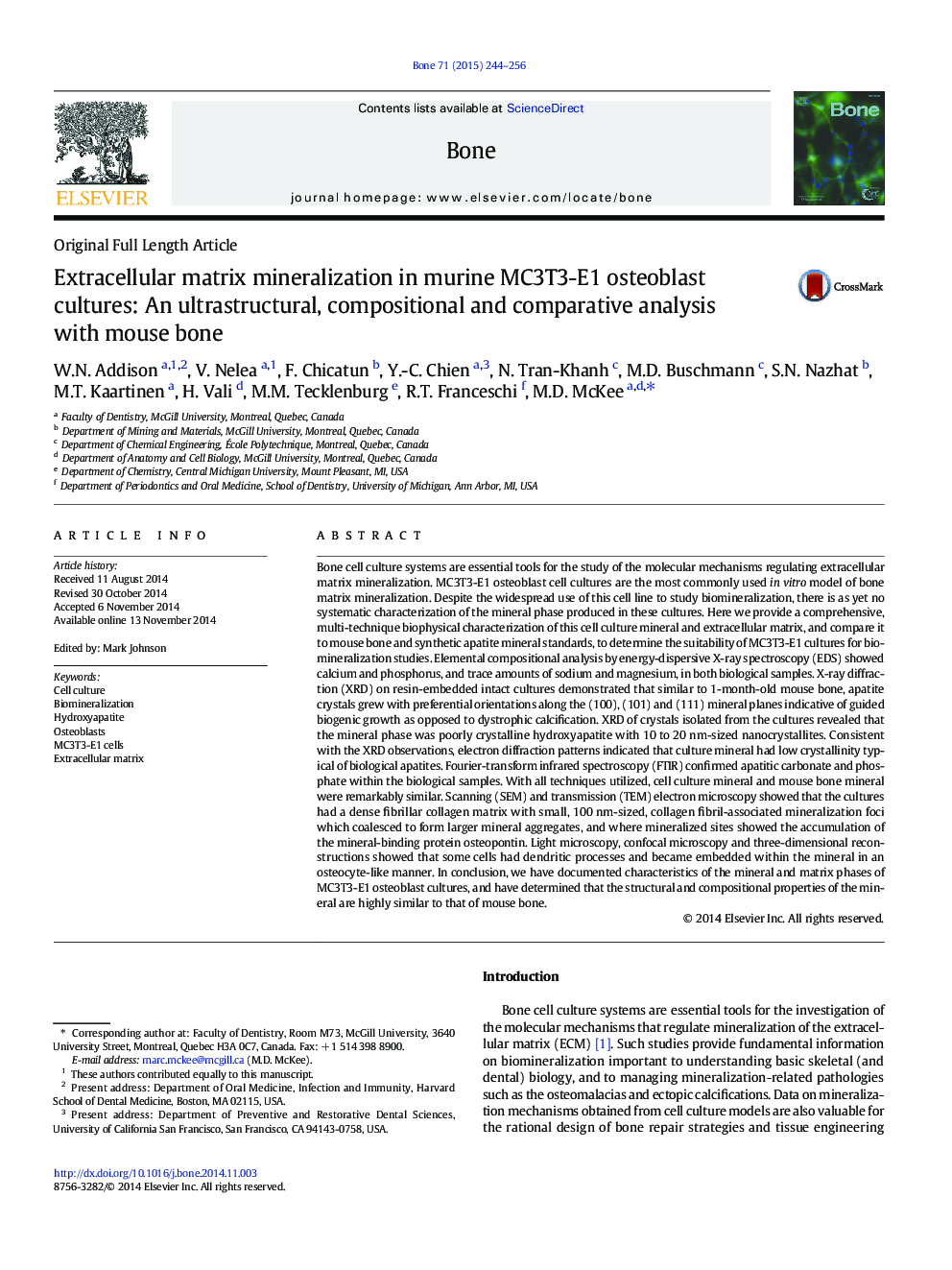| کد مقاله | کد نشریه | سال انتشار | مقاله انگلیسی | نسخه تمام متن |
|---|---|---|---|---|
| 5889839 | 1568148 | 2015 | 13 صفحه PDF | دانلود رایگان |

- Mineral is characterized in a widely used in vitro model of bone formation.
- A bone-like mineral phase is identified in MC3T3-E1 osteoblast cultures.
- XRD of osteoblast culture mineral in situ shows preferential crystal orientations.
- FTIR of the cultures and bone shows similar apatitic carbonate and phosphate.
- MC3T3-E1 osteoblast cultures are a valid and useful model for bone mineralization.
Bone cell culture systems are essential tools for the study of the molecular mechanisms regulating extracellular matrix mineralization. MC3T3-E1 osteoblast cell cultures are the most commonly used in vitro model of bone matrix mineralization. Despite the widespread use of this cell line to study biomineralization, there is as yet no systematic characterization of the mineral phase produced in these cultures. Here we provide a comprehensive, multi-technique biophysical characterization of this cell culture mineral and extracellular matrix, and compare it to mouse bone and synthetic apatite mineral standards, to determine the suitability of MC3T3-E1 cultures for biomineralization studies. Elemental compositional analysis by energy-dispersive X-ray spectroscopy (EDS) showed calcium and phosphorus, and trace amounts of sodium and magnesium, in both biological samples. X-ray diffraction (XRD) on resin-embedded intact cultures demonstrated that similar to 1-month-old mouse bone, apatite crystals grew with preferential orientations along the (100), (101) and (111) mineral planes indicative of guided biogenic growth as opposed to dystrophic calcification. XRD of crystals isolated from the cultures revealed that the mineral phase was poorly crystalline hydroxyapatite with 10 to 20Â nm-sized nanocrystallites. Consistent with the XRD observations, electron diffraction patterns indicated that culture mineral had low crystallinity typical of biological apatites. Fourier-transform infrared spectroscopy (FTIR) confirmed apatitic carbonate and phosphate within the biological samples. With all techniques utilized, cell culture mineral and mouse bone mineral were remarkably similar. Scanning (SEM) and transmission (TEM) electron microscopy showed that the cultures had a dense fibrillar collagen matrix with small, 100Â nm-sized, collagen fibril-associated mineralization foci which coalesced to form larger mineral aggregates, and where mineralized sites showed the accumulation of the mineral-binding protein osteopontin. Light microscopy, confocal microscopy and three-dimensional reconstructions showed that some cells had dendritic processes and became embedded within the mineral in an osteocyte-like manner. In conclusion, we have documented characteristics of the mineral and matrix phases of MC3T3-E1 osteoblast cultures, and have determined that the structural and compositional properties of the mineral are highly similar to that of mouse bone.
Journal: Bone - Volume 71, February 2015, Pages 244-256